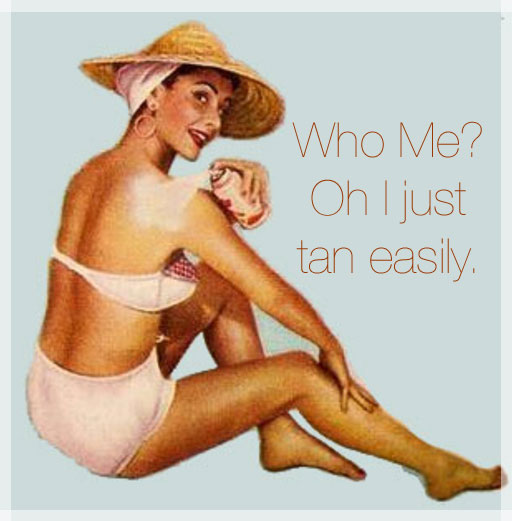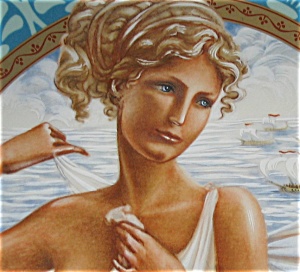Clearly I don’t blame La Chanel for everything! She probably can’t be held responsible for Altzheimers … or global warming … or weapons of mass destruction … or reality TV … or Weinstein, Trump et al … or … etc.
In fact, in many ways Coco Chanel was entirely admirable. She had a phenomenal impact on womens’ lives leading their liberation from the constraints of the ‘corsette sillouhette’ to a more sporty casual look that became the standard of feminine style. There was the classic Chanel suit, the ‘go anywhere’ little black dress. Oh yes, and bellbottom trousers, bobbed hair, turtleneck sweaters, trench coats … the list goes on. She also made costume jewellery fashionable.
At its peak, the Chanel couture empire employed 3,500. Coco Chanel is the only fashion designer listed on Time Magazine’s list of the 100 most influential people of the 20th century and her achievements have provided inspiration for aspiring career women and female entrepreneurs over the decades. However, there is no getting away from the fact that the ultra-chic and oh-so-famous Chanel must take the blame for some things. To be clear, I’m not talking all that stuff about her being a collaborator and shagging important Germans during WWII, which somewhat un-gilds this otherwise fragrant lily’s legacy. Rather, I’m talking the fact that she has been attributed with making the sun tan fashionable.
With New Zealand heading into summer and the winter outer layers of camouflage clothing being peeled away like so many onion rings, the inconvenient and inescapable truth rears its ugly head; you really are what you eat and drink. After a winter of over-indulgence, I’m contemplating the somewhat depressing and inevitable results and the looming horror of skimpy summer clothes. Clearly, it’s time to reach for the self-tanner and attempt to conceal some of the evidence. But why do I think that being tanned will be an improvement? Fashion that’s why, and it’s all Chanel’s fault!
Chanel regularly vacationed with all the beautiful people in St. Tropez, Cap d’Antibes, Monte Carlo and the other sun-laden playgrounds of the rich and famous that make up the French Riviera. The legend has it that during one of these celeb hangouts on a cruise to Cannes 1923 she unintentionally got sunburnt. Hard to imagine this ultra sophisticated woman all lobster red and peeling, but that’s the story. By the time she got back to Paris, this unwanted blight had turned into what we now know as a tan. This happened at a time when Parisians had also fallen in love with legendary singer Josephine Baker, described at the time as being “caramel-skinned”. The combined social currency of both women sparked a trend; tans became cool and synonymous with health, wealth and luxury in western society.
Cashing in on this new trend, Jean Patou lunched the first sun tan oil “Huile de Chaldee” in 1927 and started a whole new industry of tan-related products. These were designed to help the tidal wave of people who wanted to look as if they were in with the in crowd but didn’t have the in crowd’s available leisure time or money to achieve the desired bronzing. This new trend was a stampede away from the previous peaches and cream beauty standard for caucasian society women who wouldn’t even consider going outside without a parasol — their privideged whiter shade of pale differentiated them as ‘quality’ from the laboring classes with their telltale ruddy complexions from too much time spent outdoors. Many of them even lived in far-flung outposts of empire where they had to contend with the blazing sunshine of tropical climates. For these women, preserving their complexions was a Herculean task, which they stuck to with the tenacity of my late and much beloved Springer Spaniel Oscar on the scent of a possum.
Of course, once the tan became fashionable, there was no going back. Beach clothes shrank in size —disappeared altogether on some beaches — and tanning became a leisure time activity in its own right. The obsession with being tanned led to sun beds, self-tanners, spray on and brush on tanning lotions. Thankfully the ones available now are a vast improvement on the eyesore tangerine tones first on offer and generally associated with those 70s and 80s-spawned medallion men with curly perms. And Trump of course, the leader time forgot, who seems to be stuck in an 80s time warp on just about every count.
But it all still comes back to fashion and perception. Fashion dictates, so shall it be. There was a reason for all those open-shirted men exposing their hairy chests. Fashion! So what, you may well ask? Well, the trouble with fashion is that it’s so easy to become a slave to it. The whole self-image thing for people with less than sculpted bodies springs to mind. The tyrany of the itsy-bitsy-teeny-weeny-polka-dot-bikini is one thing. Without putting too fine a point on it, a tan just seems to improve any pale skinned body no matter how fat, thin, wrinkly, wobbly or droopy it might be. But people can also become fashion victims. In the context of tanning, there’s the accelerated ageing effects of too much intense sunlight. It is likely that wrinkled wasn’t something most of us aspired to be when we grew up and over-exposure to UV rays is a sure-fired way of ending up with a face that looks like a relief map of the planet.
Vanity is a wonderful diffuser of logic. I’m thinking the received wisdom of ages — you have to suffer to be beautiful. But risking death in beauty’s name takes this concept to a ludicrous extreme. For sure, this is all slightly tongue in cheek, but the risk of melanoma most definitely isn’t a joke.To be fair to Chanel, in common with many other fun things that have been rumbled over the last few decades like smoking, drinking and sugar, back in her heyday, getting a tan wasn’t ‘scientifically proven’ to be bad for you. She wasn’t burdened with the knowledge of the co-relation between sun and skin cancer. Nor did she live in the Southern Hemisphere under a hole in the ozone layer where burn times in high summer can be as little as 12 minutes and the prospect of melanoma is an everyday concern. For sure, this is all slightly tongue in cheek, but the risk of melanoma most definitely isn’t a joke.
In any case, and somewhat paradoxically, sunshine in the right quantities is very good for us. It’s one of the main sources of vitamin D and the feel-good factor of summer and sunshine is hard to underestimate. It’s even — allegedly — an effective aphrodisiac. But the best thing is that sunshine is an equal opportunities commodity. You don’t need to be wealthy, educated to within an inch of your life or live anywhere special to enjoy it — although some places have a lot more than others. It’s an option for old and young, fat and thin, socialist and capitalist, man and woman (on either of their separate planets) and people from any ethnicity or minority group — why else would there be Birquinis? Such irony in the French response to those!
The tan retains its allure but nowadays conditions apply. Parents slip, slap and slop sun block on their kids and bundle them up in rash suits to keep them safe from the sun, whilst still benefitting from it. All cosmetic ranges have products with built in UV protection. The basting sun oils are still there, but 30+ sun blocks dominate the sun cream categories and there are great cosmetic products that can achieve a ‘natural glow’ as if from the sun.
I still love sunshine. In fact, as soon as I’m done with this blog post, I’m heading out into it. But times change. In my tan-obsessed youth in London, we actually swopped tactics about how to get and stay tanned. These generally included a cheap, early summer ‘bucket shop’ holiday with a drift of friends at one of a number of Mediterranean resorts to get the all important foundation tan that would set us up for the summer. A week of serious sloth, spot-welded to our sun loungers, basting ourselves and turning on our bodily axes like so many roasting chooks, then falling into the water when the heat and boredom got the better of us. OK I exaggerate, but I’m sure you get the picture. After that, through the summer we would continue to chase opportunities for ‘topping up’. Topping up consisted of ‘pegging out’ as we used to call it, on our roof decks or in back gardens slathered in frying oil on any sunny day that happened to coincide with a day off work or hitting the park nearest to work at lunchtime and shedding as many clothes as the standards of decency in the 80s allowed.
This was at a time when it was still considered a bit ‘not done’ for female professionals to go bare-legged to work, even in extreme heat of the summer. My peers and I were in the vanguard of the change, with hard won acceptance based on baring legs that were bronzed (naturally or artificially) rather than the sort of blue white so beloved of washing powder manufacturers. The getting of a tan at times seemed like an obsession and certainly an intricate part of our then beauty regimes. Not being tanned in summer was as unthinkable as …er … that we’ll all wake up and find that Brexit was just a dream.
These days, my sun worshipping is more muted and often limited to a long walk in a wildlife sanctuary where the dappled sunlight filters through the beautiful native bush and makes exotic patterns on the pathways. I still get the benefits from the all-imporant vitamin C without the risks. In any case, in this part of the world, it’s hard not to get tanned simply by spending any time outside. That’s good because I will always prefer the suntanned look to the alternative. The preconditioning runs deep. But while I am clearly a still a bit of a slave to fashion, I certainly don’t intend to be a victim to in. Pity I didn’t have so much common sense earlier. Might have had a few less wrinkles!


